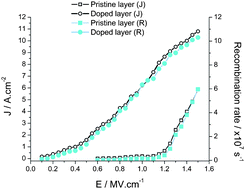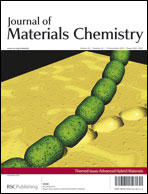Theoretical study of the influence of salt doping in the functioning of OLEDs†
Abstract
One of the strategies to improve the efficiency of organic light emitting diodes (OLEDs) is to dope the active organic semiconducting layer with

- This article is part of the themed collection: Advanced Hybrid Materials

 Please wait while we load your content...
Please wait while we load your content...